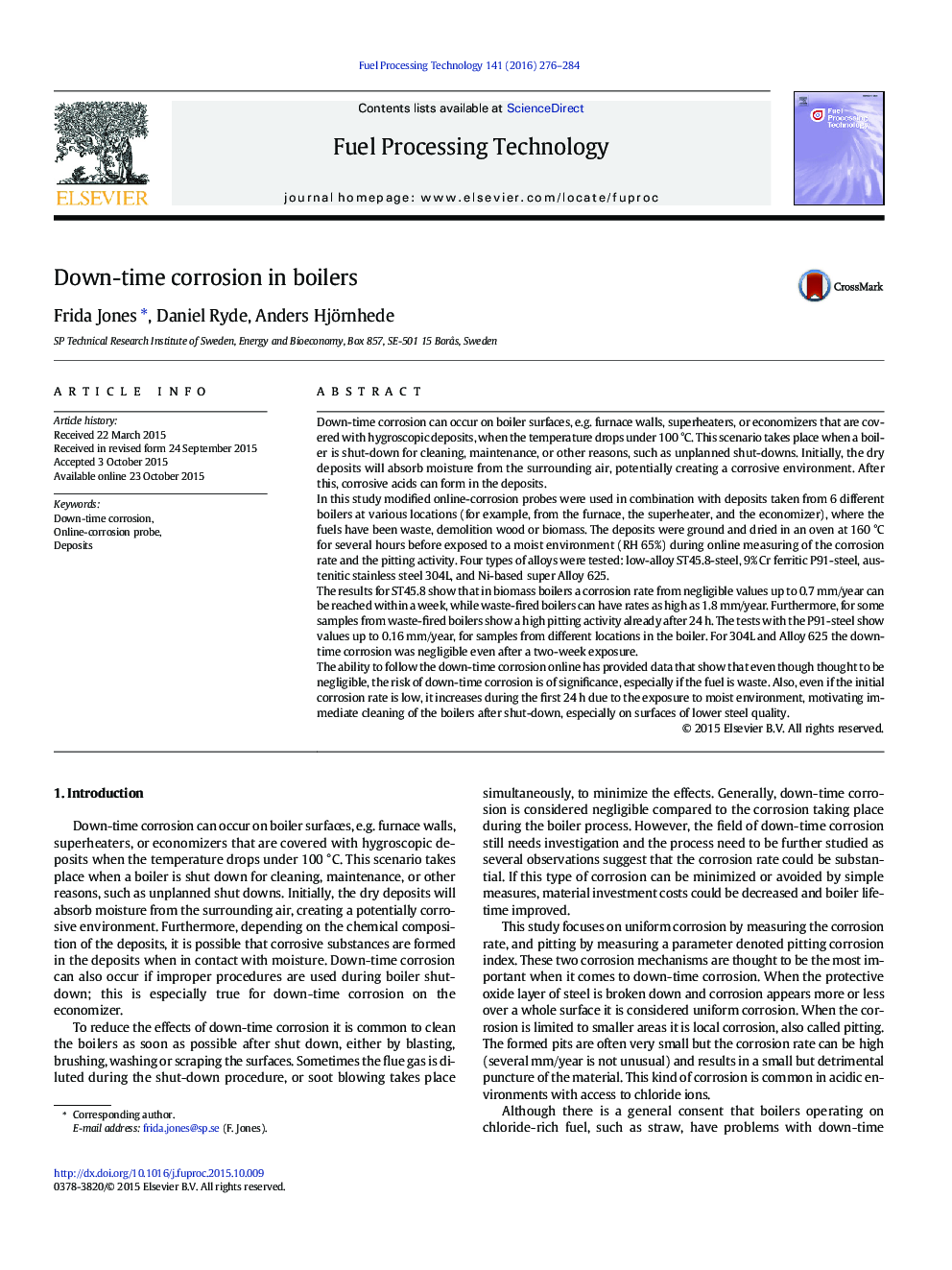| کد مقاله | کد نشریه | سال انتشار | مقاله انگلیسی | نسخه تمام متن |
|---|---|---|---|---|
| 209247 | 461663 | 2016 | 9 صفحه PDF | دانلود رایگان |
• Modified online-probes were used to measure down-time corrosion and pitting activity.
• Samples from six full-scale boilers were used.
• ST45.8 and P91 show corrosion while 304L and Alloy 625 have negligible values.
• The results suggest that cleaning should be prioritized after boiler shut-down.
Down-time corrosion can occur on boiler surfaces, e.g. furnace walls, superheaters, or economizers that are covered with hygroscopic deposits, when the temperature drops under 100 °C. This scenario takes place when a boiler is shut-down for cleaning, maintenance, or other reasons, such as unplanned shut-downs. Initially, the dry deposits will absorb moisture from the surrounding air, potentially creating a corrosive environment. After this, corrosive acids can form in the deposits. In this study modified online-corrosion probes were used in combination with deposits taken from 6 different boilers at various locations (for example, from the furnace, the superheater, and the economizer), where the fuels have been waste, demolition wood or biomass. The deposits were ground and dried in an oven at 160 °C for several hours before exposed to a moist environment (RH 65%) during online measuring of the corrosion rate and the pitting activity. Four types of alloys were tested: low-alloy ST45.8-steel, 9% Cr ferritic P91-steel, austenitic stainless steel 304L, and Ni-based super Alloy 625. The results for ST45.8 show that in biomass boilers a corrosion rate from negligible values up to 0.7 mm/year can be reached within a week, while waste-fired boilers can have rates as high as 1.8 mm/year. Furthermore, for some samples from waste-fired boilers show a high pitting activity already after 24 h. The tests with the P91-steel show values up to 0.16 mm/year, for samples from different locations in the boiler. For 304L and Alloy 625 the down-time corrosion was negligible even after a two-week exposure. The ability to follow the down-time corrosion online has provided data that show that even though thought to be negligible, the risk of down-time corrosion is of significance, especially if the fuel is waste. Also, even if the initial corrosion rate is low, it increases during the first 24 h due to the exposure to moist environment, motivating immediate cleaning of the boilers after shut-down, especially on surfaces of lower steel quality.
Journal: Fuel Processing Technology - Volume 141, Part 2, January 2016, Pages 276–284
